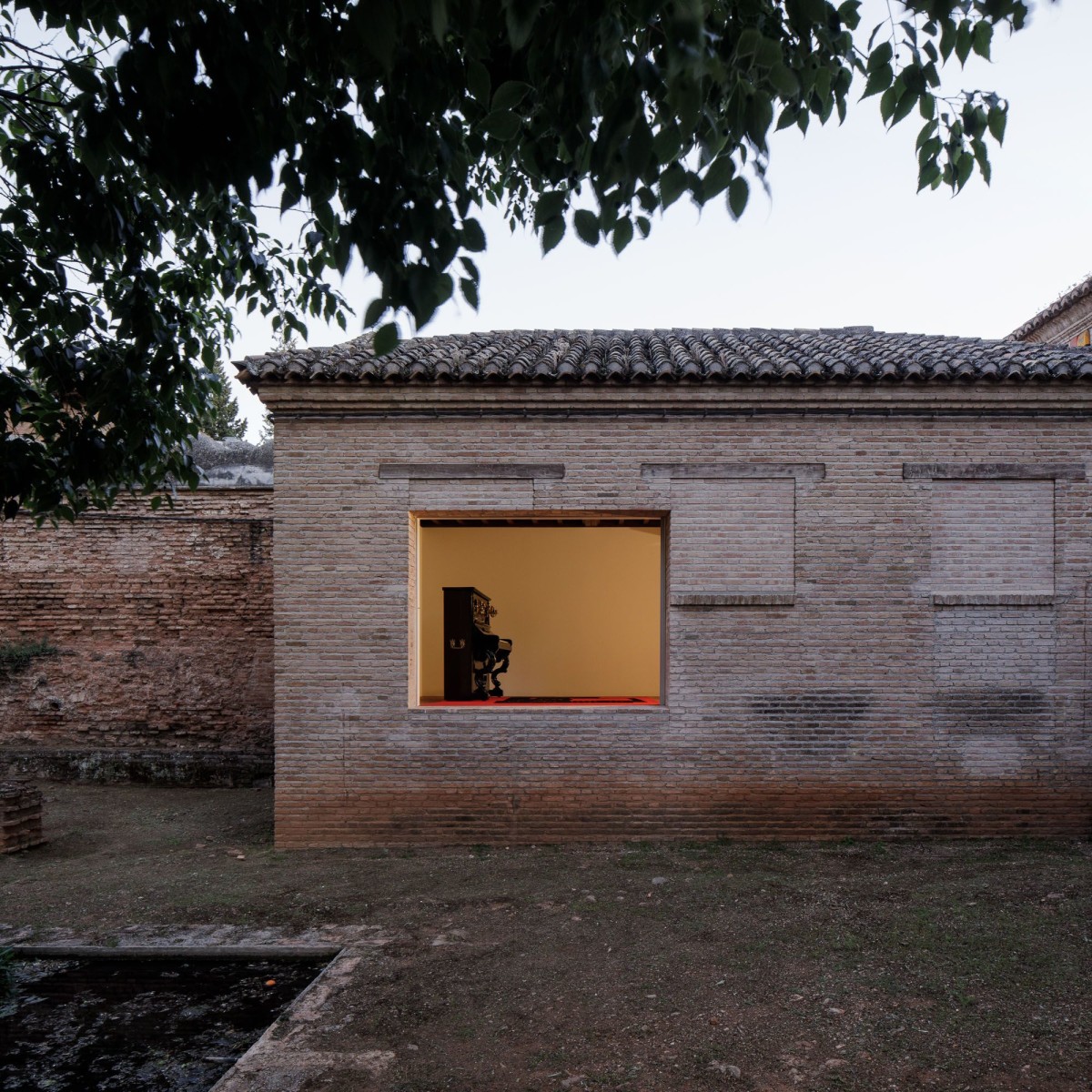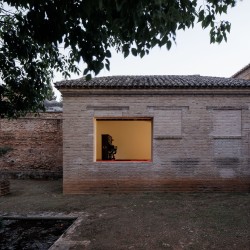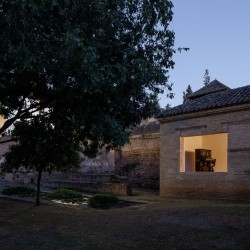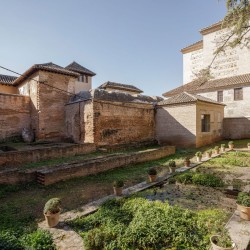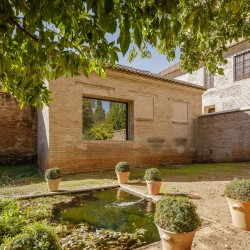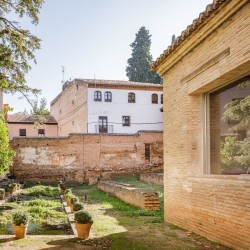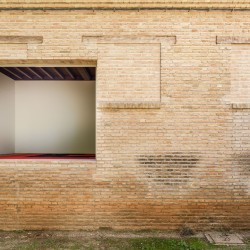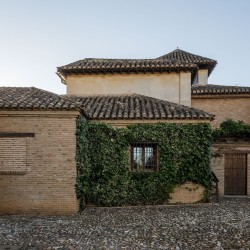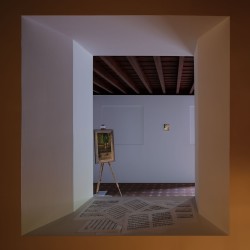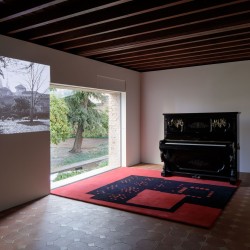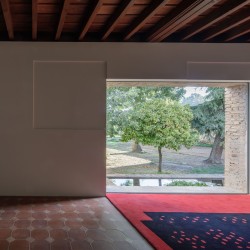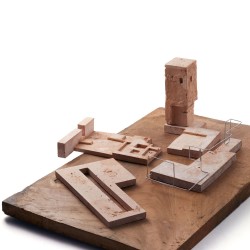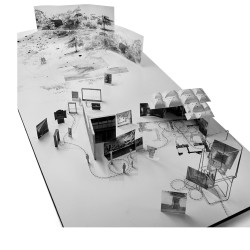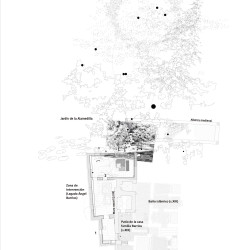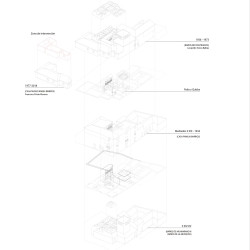Rehabilitation and interpretation of the building annexed to the Baño de la Mezquita (Bath of the Mosque for the exhibition space “Artistic legacy of the Barrios family”
The Christian conquest of the Alhambra in 1492 led to the transformation of some of its buildings into private houses. In the case of the Baño de la Mezquita (Bath of the Mosque), the Islamic construction was radically adapted into a courtyard house with a garden located on the archaeological remains. Between 1883 and 1934, the Barrios family settled in this place that became a meeting point for a large group of artists, poets and musicians such as Sargent, Lorca and Falla, and was recognized as the cultural hub within the city and the Alhambra before the reconstruction of the islamic Baño by Torres Balbás which took place in the early 20th century within the process of an historical restitution of the monument.
In this historical space surrounded by gardens, the intervention carried out links the former medieval constructions, other more recent ones, an archaeological garden and the remains of a courtyard along with domestic objects, instruments, sounds and musical compositions that prolong the remembrance to the present day. The rehabilitation is based on the diachronic interpretation of the history of this place and its transformations through the value of the architectural pre-existences, the objects and their artistic and interpretative dimension. The music of the artist Ángel Barrios, the piano and guitar, photographs and familiar objects arranged next to the medieval wall of the Baño constitute a scenario of diverse elements that evoke the history of this space and its transformations throughout history. The project incorporates an archaeological garden with a water pool from an old Islamic palace that is intended to be recovered for public visits and musical evenings in continuity with the gardens of El Partal.
The intervention begins with an itinerary that relates the spaces of the bath, the courtyard of the house and the view of the archaeological garden in this sequential order, making visible the three most significant elements of the place. Three windows from different periods and styles articulate an emotional journey through the history of this space. At the end of the itinerary, a large window-viewpoint next to a carpet, that has a drawing of the Islamic bath, and the musician’s piano extends the presence of the garden and the pool into the interior of the rooms.
_
Architect of the project and construction management: Juan Domingo Santos
Architect collaborating in the project and construction management: Carmen Moreno Álvarez
Museum project: Juan Domingo Santos y Carmen Moreno Álvarez
Collaborators: Juan Moreno Romero (project and construction management), Loreto Corisco González (museum project), Alejandro Infantes Pérez y Ana I. Rodríguez Aguilera (graphical representation and models), architects
Industrial engineer: Patricio Bautista Carrascosa (Ábaco Ingenieros)
Promotor: Patronato de la Alhambra y Generalife (Junta de Andalucía)
La conquista cristiana de la Alhambra en 1492 supuso la transformación de algunas de sus arquitecturas en casas particulares. En el caso del Baño de la Mezquita, la construcción islámica fue radicalmente adaptada a casa patio con un jardín emplazado sobre restos arqueológicos. Entre 1883 y 1934 la familia Barrios se instaló en este lugar convertido en espacio de encuentro de artistas, poetas y músicos como Sargent, Lorca o Falla, foco cultural de la vida de la ciudad y de la Alhambra antes de la reconstrucción del Baño islámico realizado por Torres Balbás a inicios del siglo XX en un proceso de restitución histórica del Monumento. En este histórico espacio rodeado de jardines se ha llevado a cabo una intervención que relaciona las antiguas construcciones medievales, otras más recientes, un jardín arqueológico y los restos de un patio junto a objetos domésticos, instrumentos, sonidos y composiciones musicales que prolongan la memoria hasta el presente. La recuperación está basada en la interpretación diacrónica de la historia de este ámbito y sus transformaciones a través del valor de las preexistencias arquitectónicas, los objetos y su dimensión artística e interpretativa. La música del artista Ángel Barrios, el piano y la guitarra, fotografías y objetos familiares dispuestos junto al muro medieval del Baño constituyen un escenario de elementos diversos que evocan la historia de este espacio y sus transformaciones a lo largo de la historia. La intervención incorpora un jardín arqueológico con una alberca de agua de un antiguo palacio islámico que se pretende recuperar para la visita pública y la celebración de veladas musicales en continuidad con los jardines de El Partal. La intervención se inicia con un recorrido que relaciona los espacios del Baño, el patio de la casa y la visión del jardín arqueológico en este orden secuencial, haciendo visibles los tres elementos más significativos del lugar. Tres ventanas de distintas épocas y estilos articulan un paseo emocional por la historia de este espacio. Al final del recorrido un gran ventanal-mirador junto a una alfombra con el dibujo del baño islámico y el piano del músico prolonga la presencia del jardín y la alberca al interior de las estancias.

